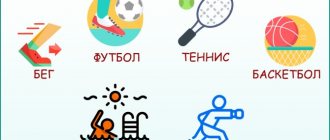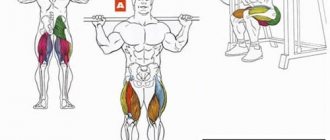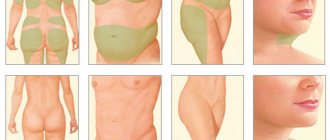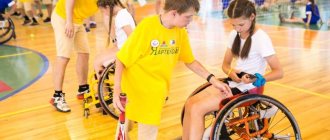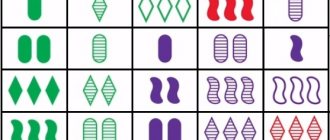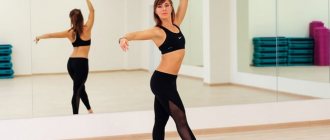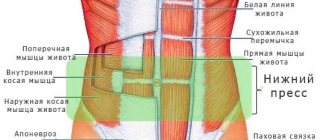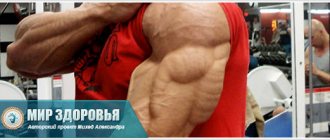There are two fundamentally different types of rowing - rowing and rowing. The first is when the oar is connected to the boat through a rowlock. The rower usually sits backwards. Examples of such rowing are folk rowing, boat rowing, rowing on yawls and yawls. There are competitions in yawl rowing, and they are especially popular in the Russian Navy and other countries. The largest competition is held in Finland, the so-called “Kircha Boat” or church boat, where over 600 teams participate and the distance is 60 km. And of course, the Olympic sport is rowing.
Rowing
Athletes propel the boat with oars while sitting backwards. This type of rowing is divided into two types: sculling and swing. In the first case, they row with two oars, in the second, respectively, with one. Boats come in singles, doubles, fours and eights. On an eight there is always a coxswain, twos and fours can be either without a coxswain or with one, while a single rower always controls the oars.
Distances range from 500m to 160km. At the finish line, the speed of the 8 boat can reach 30 km/h. In rowing, it should be noted that the cost of boats is relatively high compared to other types. For example, the price of a professional single boat starts from 1,000,000 rubles.
2.4. Rowing technique
Home / Publications / Literature / Bookshelf / Boat. Device and controlBefore rowing, at the command
“Oars”,
rowers must take the starting position: sit on the canopy straight, occupying 3/4 of its width, slightly bent legs should rest against the stops, hands bent at the elbows should be on the oar (one on the handle, the other on the shaft ) chest width apart, palms down (Fig. 32).
Rice. 32. Starting position for rowing (the blade is turned parallel to the surface of the water)
Proper positioning of rowers makes it easier to master rowing techniques and makes it possible to make full use of their physical strength. The stroke can be divided into four phases (Fig. 33):
a) Drifting of the oar blade towards the bow of the boat (1, 2).
Rice. 33. Turning the oar blade when rowing: 1 - initial position (at the command “Oars”); 2 - at the beginning of a turn away from you; 3 - at the end of the turn and at the moment of entering the water; 4 - abeam; 5 - at the moment of removal from the water; 6 - when skidding
The oar blade moves through the air at the height of the gunwale, deployed parallel to the surface of the water to reduce air resistance and not touch the water.
Rice. 34. Oar skid
The rower's body leans forward, knees bend, arms straighten, head rises and turns towards the blade (Fig. 34).
At the end of the skid, by moving the hands away from you, the oar is turned so that the leading edge of the blade, having passed through the upper position, is inclined from the vertical plane towards the stern at an angle of 10-15°.
b) Inserting the blade into the water (3).
The blade is inserted into the water quickly and energetically, but without impact. The inclination of the upper edge towards the stern at an angle of 10-15° helps to keep the blade at the required depth. If the blade is inserted into the water vertically or with the upper edge turned towards the bow, then it can go too deep, turn into a horizontal position in the water and, slipping under the blades of other oars, slow down the rowing pace.
The sluggish, non-energetic immersion of the blade does not give a push to the boat and can even cause it to slow down if the speed of the oar is lower than the speed of the boat.
The depth of immersion of the blade in the water is of great importance. At first glance, it seems that the oar works most effectively when the entire blade is in the water. However, it is not. The blade is made somewhat longer in anticipation of rough seas, when it becomes more difficult to control the position of the oar. In calm water, the blade should be immersed in water 1/2-2/3 of its length. When fully immersed, the rower is forced to exert more effort on the drive, as a result of which he gets tired faster. With less immersion, the working area of the blade decreases, and the oar will work ineffectively.
In practice, the depth of immersion of the blade depends on the training of the rower and on the sailing conditions (wind, waves). A trained rower sinks the blade more than a beginner. When moving with the wind, the blade plunges less than against the wind.
c) Driving the blade in the water.
During navigation, the boat is given forward motion. Therefore, the drive is the main phase of the stroke and must be performed from beginning to end with maximum effort.
When starting the drive, the rower must firmly rest his feet on the stop and pull the oar with his entire body on straight arms. When wiring, the blade must be in a vertical position. The oar handle must be held at the same level, without losing the feeling of the oar's support on the water. Under this condition, the blade maintains a constant depth.
The main work during wiring is performed by the muscles of the legs and back. Straightened arms only transfer to the oar the force developed due to the movement of the body. The arm muscles are put into action when the body, having passed the vertical position, leans back. At this moment, the arms bend and forcefully pull the oar handle towards the body.
When pulling, the oar handle is grasped with four fingers from above and one (large) from below. Grasping the handle with your palm is completely unacceptable, since when pulling the oar, the skin of the palm gathers into folds and is easily abraded.
Rice. 35. Forces acting on a boat when rowing
The wiring must be long enough and carried out simultaneously by all oarsmen, which gives the boat uniform movement and ensures better results when crossing long distances.
With short strokes, the boat moves unevenly, jerkily, and the rowers quickly get tired. Frequent strokes (four to five strokes) with a slight skid of the oar are used at starts in boat competitions to give the boat the required initial speed.
However, you should not make excessively large drift of the blades and very long wiring. In Fig. 35 shows the forces acting on the boat when rowing. The water resistance force R acts on the hull and slows down the forward movement of the boat. The water reaction force P acts on the oar blade and is transmitted through the oarlocks to the boat hull. The force P can be decomposed into a traction force T, directed parallel to the center plane, which moves the boat forward, and a drift force D, directed perpendicular to the center plane, which does not participate in the movement of the boat. The T force is greatest when the blade is abeam. At this moment the force D is zero. When the blade is skidded at an angle of 45° from the beam, T = D, and when the blade is skidded to a larger angle, D>T, i.e., most of the rower’s efforts are wasted. Therefore, the angle of skidding of the oar and the end of the drive should be within 45-50°.
Of great importance is the simultaneity of the beginning and end of the rowing of both sides by the rowers. With non-simultaneous strokes under the influence of force D, the boat sways and yaws, which makes it difficult for the rowers to work and reduces the controllability and speed of the boat.
Simultaneous rowing is achieved:
— alignment of rowers along the strokes;
- alignment of the left stroke - to the right;
— execution of commands (counting) by the foreman of the boat;
- careful training of rowers.
d) Removing the blade from the water.
To remove the blade from the water at the end of the drive, you need to complete the backward movement of the body, forcefully pull the oar towards the body and with a sharp downward movement of the hands, remove the blade from the water. Then the oar turns towards itself and the blade is in a horizontal position with the top edge towards the nose. You should not start turning the blade in the water due to its possible arbitrary deepening.
All phases of the stroke must follow one after another continuously, forming a complete closed cycle.
Proper breathing is important when rowing. When lifting the oar, you need to take a deep breath through your nose, and while pulling, exhale slowly through your mouth.
The rowing pace is set depending on the technical and physical training of the rowers. For a six-oar yawl, the normal rowing rate is 26-30 strokes per minute.
Rowing in wind and waves has its own characteristics. When moving in the wind, the stroke of the oar should be very strong and sharp, and the skid should be slow and smooth without turning the blade. When moving against the wind and waves, the boat loses speed immediately after the stroke, so the oars are brought in faster and pulled out more slowly.
Forward Contents Back
Kayaking and canoeing
rowing without rowing takes place here - this is when the oar is not connected to the boat, but is in the hands of the rower. When riding these boats, kayakers and canoeists face forward. It is very difficult for beginners to maintain balance. All boats are divided into singles, doubles and fours. Kayaking and canoeing are slightly different:
- The canoeist stands in an open boat on one knee on a special stand. The paddle has a T-shaped handle with one blade. Rowing is performed on one side only. The canoe does not have a rudder; steering is carried out through special movements of the oar. In addition, the boat is very unstable. Beginners cannot master this boat on their own.
- kayaker sits in a closed boat. A kayak paddle has two blades attached to a single spindle. The strokes are made from different sides of the boat alternately. A kayak, unlike a canoe, has a rudder. Unlike all previous types of kayaking, you can practice it yourself, without a coach.
Landing
In a sports kayak, balance is maintained due to the relaxed state of the lower back muscles. In a touring kayak, balance is maintained by sensitive and constant work of the lower limbs and body. The touring position is also called slalom, in which the heels rest on the stand, the knees are set wide to the sides, and are fixed with hip supports. The seat is higher than the keelson, and it is adjustable depending on the height, weight and build of the rower, as well as the design features of the kayak.
Before rowing, the back does not rest against the back of the seat; a gap of about four centimeters is maintained. The torso, on the contrary, bends forward so that the body in the lower back moves with free amplitude and there is an opportunity to bend in all directions. Thanks to the rigid landing, the body remains vertical and the roll can be done with your feet. In order for the landing to be tense and rigid, the ankle joints must be tense. You can check the correctness of the seat; if it is correct, then you can rock the kayak only with your legs, without working your torso; also, after half an hour of rowing, your legs should not get tired. Landing errors:
- a seat that is too low does not allow bending, because the bulwark is located at chest level, poorly secured hips get tired, it is more difficult for a person to balance on the boat, normal rowing is made difficult by resting the hands on the deck and the bulwark;
- with a high seating position, the balance is disrupted due to the fact that the center of gravity is too high, and it is also difficult to secure the hips on the bulwarks;
- if the rower in the initial position rests too much on the back of the seat, this restricts his freedom in the lower back, and he cannot perform all the techniques;
- tilting the seat forward puts stress on the legs;
- tilting the seat back makes the body less mobile, since the rower leans too much on the back; the seat (its leading edge) with such a position can compress the blood vessels of the thighs, which can make the athlete quickly get tired.
Dragonbot
Dragon boat D-10, D-20 is a ten- or twenty-seater canoe. It appeared in China more than two thousand years ago. The boat has the head and tail of a dragon. Therefore, its name is not just metaphorical. Dragon Boating was recognized as a separate sport in 2007. It is very popular in Asia and is gradually gaining popularity here.
Twenty people row, listening to the rhythm of the drum located on the bow of the boat. The “steersman” (at the stern) controls the large steering oar. This type, compared to others, is accessible to almost everyone, because no skills are needed to start training as a dragonbot. To start rowing in a “dragon”, 5 minutes of instruction on the shore and 5 minutes in the boat under the supervision of a trainer are enough. In the future, all that remains is to improve your technique.
Exercise technique
- You need to sit on the seat of the rowing machine and position yourself, observing the following parameters: your legs are strictly bent at the knees, you rest on the platform with your feet (their upper part).
- Bend smoothly forward and grasp the handle of the unit without straining your wrist.
- We begin the phase of the exercise - deadlift (it starts with inhalation). We straighten our legs and push off from the surface with them, transferring the main weight to the heel. We pull the handle with a systematic movement towards your body (namely, the stomach, abdominal area).
- We bend our arms and, stretching our shoulders, bring our shoulder blades together.
- We are entering the return phase. From spreading your shoulder blades to fully straightening both arms and bending your legs. The goal is obvious - to take the starting position.
In fact, there is no difficulty at all. And, having brought the movement to automaticity, you can easily carry out 40-50 minutes of successful training.
The rowing machine is launched, we figured out how to perform the exercises correctly for greater benefit. Let's dwell on one more point - types of strokes. Namely – short and long. The first helps strengthen the muscles of the back and arms, the second has a positive effect on the shoulder girdle and torso. Both types give the same load to the buttocks and leg muscles.
There are not so many fundamental differences in technology, but they do exist. With a short stroke, the movement in the pull phase moves progressively towards the torso, with a long stroke - towards the chin. Also, importantly, a long stroke actively engages the muscles of the lower back.
Outrigger
An outrigger is a small, single-person canoe with a float attached to the side. Such a boat can overcome fairly large waves, so races on them are often held in coastal sea areas.
The rowing technique here is similar to rowing on a dragon. The only difference is that the athlete can row alternately from the left or from the right side. The paddle is also T-shaped, but has a wider blade compared to the dragon boat. The outrigger has pedal control like a kayak.
This article discussed the main types of flat water rowing . There are also many ways to row on white (or white) water. These are all kinds of extreme types of rowing - rafting, kayaking, water tourism, catamaran rowing and others. They are fundamentally different from those discussed above and require special protective equipment, and also require appropriate reservoirs or special technical structures that can create streams of stormy water.
Alternating between simple and extreme rowing
As a result of this alternation, you will increase your heart rate and warm up your muscles well before the main workout. It can also be used as a cool-down at the very end of a workout.
- Make a playlist of three songs (choose songs with a speed of 150-180 quadruple beats per minute).
- During the first track, perform simple rowing at a steady pace.
- During the second track, maintain an easy, steady tempo until the chorus, then switch to an extreme sprint until the end of the chorus. Repeat for each chorus and guitar solo, for rock fans, easing the tempo during the verse.
- Do the same during the third track. Don't forget: you can always rest where you need it. Take a break when the playlist ends.
How much do classes cost?
We have already said that rowing is an inexpensive sport. Your expenses will include the following items: payment for training, travel to competitions, fees and purchase of equipment. Let's look at each point separately.
There are practically no private rowing schools in Russia. You can learn this sport at Olympic reserve schools, sports schools, youth sports schools and water sports complexes. In most of them, classes are free. Sometimes the cost can vary from 500 to 1000 rubles per month.
The price of travel to the competition site and training camp will depend on the distance of the trip. But sometimes you will pay half the price or nothing at all.
Equipment is perhaps the biggest one-time expense of all items. You need to buy:
- Rowing suit. The average price is 2000 rubles.
- Leggings: 1,000 - 1,500 rubles.
- T-shirt with long sleeves: 1,500 - 2,000 rubles.
- Warm equipment: 3,000 - 5,000 rubles.
As a result, you will spend from 7,500 to 10,500 rubles on equipment. It will have to be updated as the child grows or as the clothes wear out.
Contraindications
There are contraindications due to which you should choose a different simulator:
- Any complications with the back, for example, hernia, sciatica. In this case, a consultation with a doctor is required, who will either prohibit training on it or adjust the training plan.
- Cardiovascular diseases.
- Problems with blood pressure.
Exercises performed on a rowing machine are not suitable for everyone; this must be taken into account when choosing equipment. Some people may get bored with repetitive movements that need to be performed for 30-40 minutes. If you do not follow the correct technique, you can injure your back.
All sports activities should be postponed if a person has chronic diseases in the acute stage or has elevated body temperature. Before starting a workout, it is imperative to focus on your well-being. Many people believe that colds are not a reason to postpone classes. But the load on the heart muscle increases, so training will be hazardous to health.
A rowing machine is one of the most effective and multifunctional home sports equipment. By exercising it, you can lose excess weight while maintaining muscle mass. Despite the simple principle of operation, you should know which muscles work on the rowing machine and follow the exercise technique to minimize the risk of injury. There is a large selection of sports equipment models on the market, and everyone can purchase a suitable option for home use.
Outstanding rowers
Surprisingly, the youngest champion in rowing was a 10-year-old boy who got into the crew completely by accident. He was taken onto the team instead of the ill helmsman. This happened in 1990.
The most outstanding rower was the Englishman Steve Redgrave. He won every competition, including the Olympics, for 20 years. Before the fifth Olympics in 1992, doctors discovered Steve had diabetes. He did not give up and once again became a champion, after which he left the sport. All Olympic rowing champions dream of repeating Steve’s achievement. By the way, in the USSR there were 18 of them. In Russia so far there are only four Olympic champions: Igor Kravtsov, Nikolay Spinyov, Alexey Svirin and Sergey Fedorovtsev.
How to choose a section
When choosing a section, make sure that the training process is followed. It includes general and special training. The OP includes exercises using exercise machines, weights, and auxiliary sports. For SP, a rowing machine, training in a rowing pool and rowing on the main, auxiliary and sports boat are used.
In addition to organizing the training process, when choosing a rowing section for a child, you should carefully consider the personality of the coach. Since this sport is taught mainly in budgetary institutions, coaches undergo a certain test for professional suitability. Parents should pay attention only to the successes of students of a particular coach in competitions. If your goal is athletic excellence, then choose the teacher whose athletes achieve good results and take prizes.
The proximity of the rowing section to the house is important, but not fundamental. Because not every sports school in your area can be equipped for rowing classes. If you find a good school, but in a different area, try to drop off and pick up your child from training yourself.
